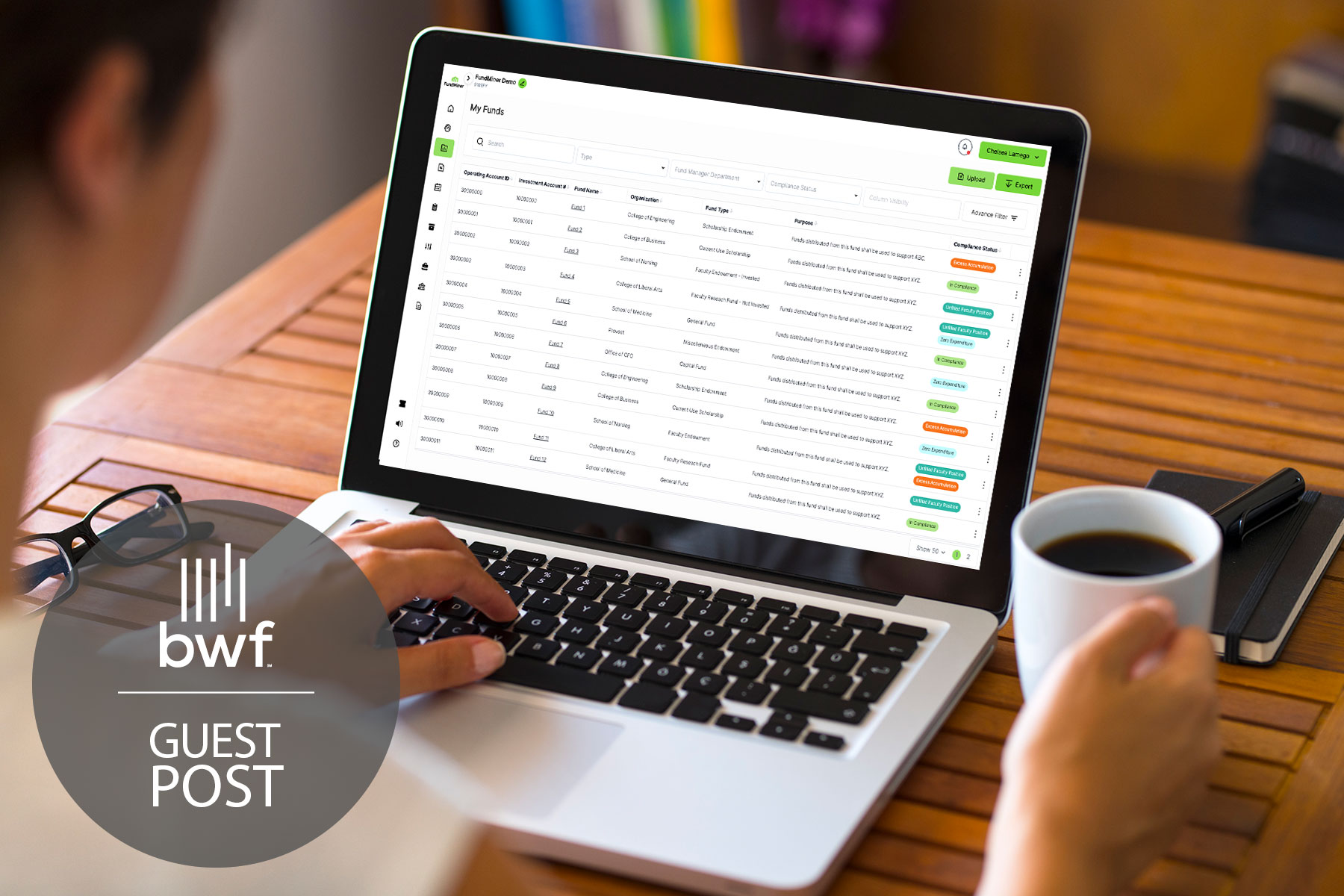Nonprofits collect data all the time, from the information you gather directly from supporters to the metrics you collect via your online marketing platforms and other channels.
Fundraising predictive analytics lets you harness this data to anticipate your supporters’ future actions and build more meaningful donor relationships through personalized outreach.
In this guide, we’re going to review everything you need to know about fundraising predictive analytics in the following sections:
- How do fundraising predictive analytics work?
- Types of predictive models
- 10 ways to use predictive analytics to boost fundraising
- How to make the most of your fundraising predictive analytics
- How to get started with fundraising predictive analytics
- Tips for updating your predictive models
Getting started with fundraising predictive analytics may seem daunting, but there are plenty of experts available to help you work through the process and establish systems that work well for your nonprofit. Throughout this guide, we’ll also highlight some of the ways that working with a data-focused fundraising consultant can help streamline your analytics.
How do fundraising predictive analytics work?
Fundraising predictive analytics (also known as predictive modeling) is the process of assessing your nonprofit’s data to make predictions and model future donor behavior.
Predictive modeling analyzes the distinct characteristics of donors who give major gifts, give for the first time, or give in special ways to find statistical “look-alikes” in an organization’s database.
AI tools help nonprofits generate and assess fundraising predictive analytics. There are three important areas of AI and predictive analytics to know about:
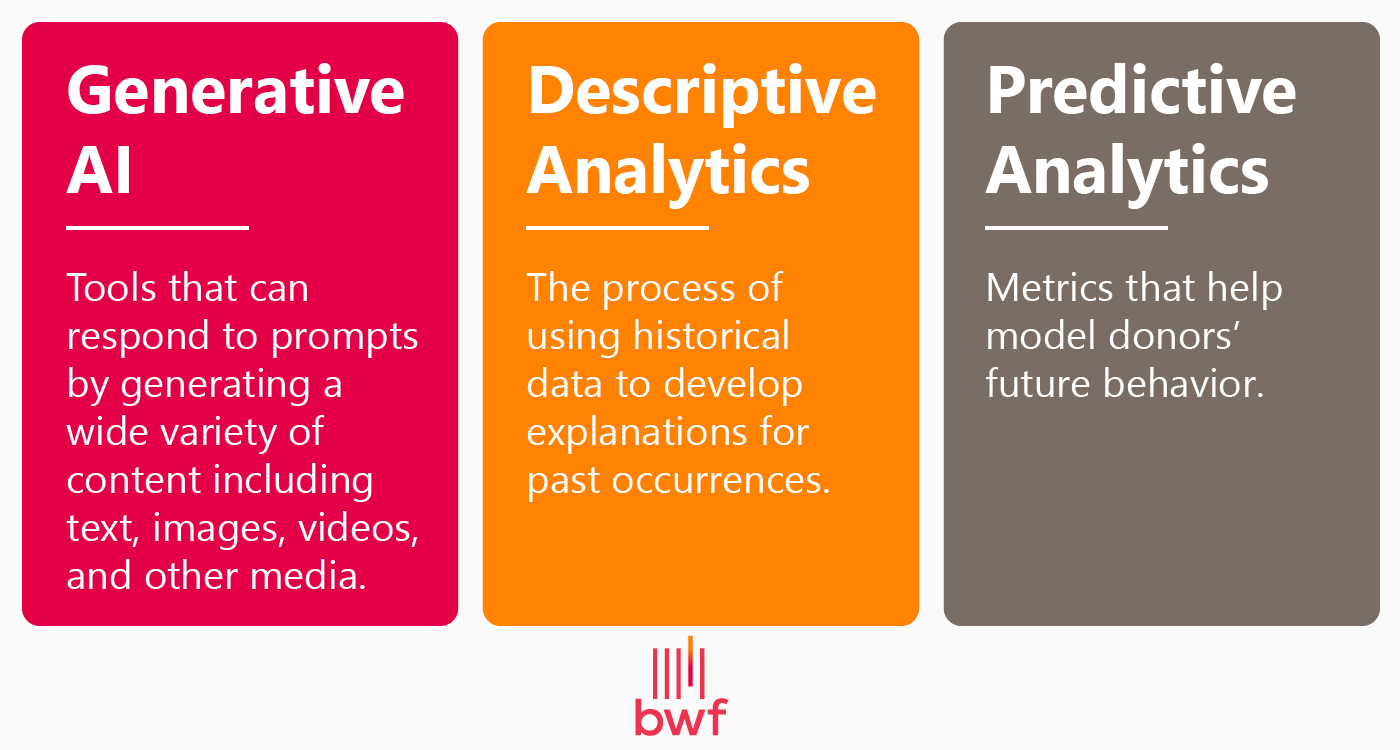
- Generative AI: Generative AI are tools that can respond to prompts by generating a wide variety of content including text, images, videos, and other media. A well-known example of this is ChatGPT, which can interact with and respond to requests in a conversational format.
- Descriptive analytics: Descriptive analysis is the process of using historical data to develop explanations for past occurrences. This includes profiling, clustering, and comparative analysis.
- Predictive analytics: When it comes to nonprofits, these are metrics that help model donors’ future behavior. It’s the process of using data modeling techniques to help estimate the success of future campaigns or initiatives. These analytics help organizations make decisions about what strategies to pursue to achieve a desired outcome. An example of a predictive analytics tool is IBM Watson, which can help organizations run and manage AI models using their internal datasets.
All three of these AI tools can serve your nonprofit in different ways, but for the scope of this post, we’ll keep our focus on predictive analytics. These are the analytics that will have the greatest impact on your organization’s upcoming campaigns.
Types of predictive models
Your organization can create predictive models to help anticipate a range of donor behaviors. Here’s a quick overview of the types of predictive models you can create with the help of AI fundraising tools:
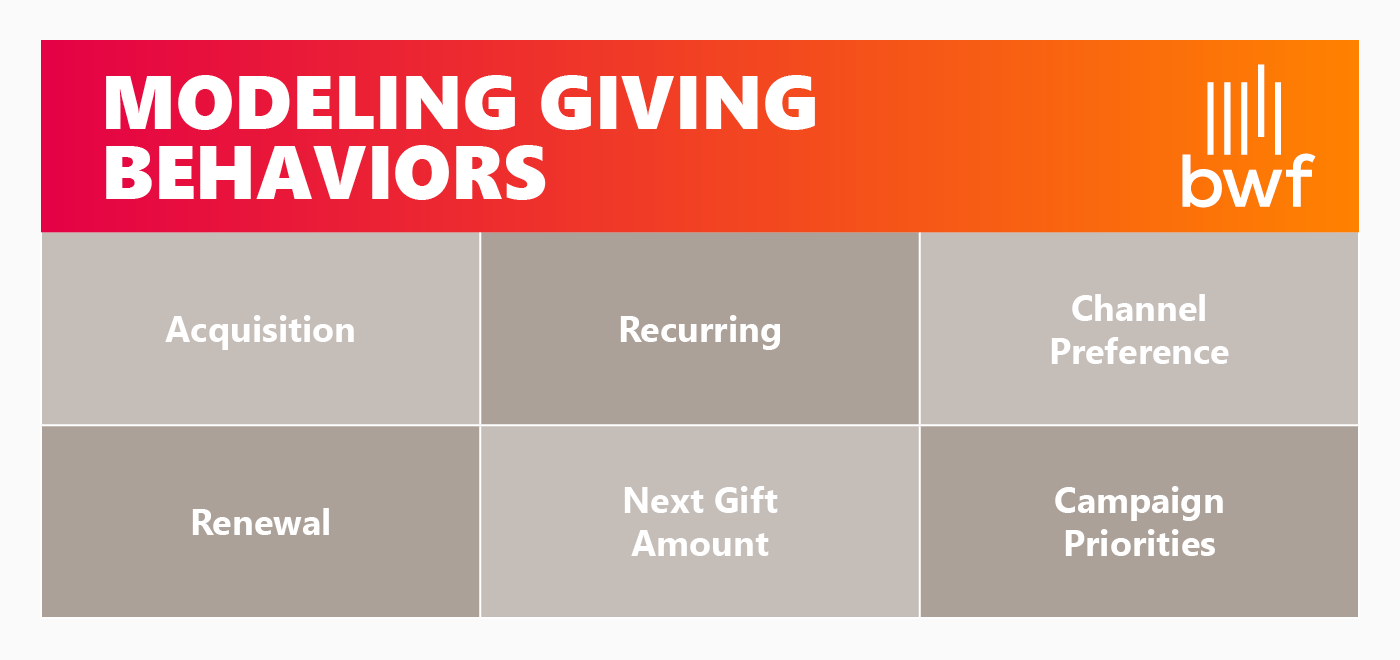
- Acquisition rates
- Recurring giving rates
- Giving channel preferences
- Likelihood of renewal
- Next gift amount
- Campaign priorities

Fundraising predictive analytics can also help your organization generate descriptive and profiling scores like:
- Engagement scoring
- Recency, frequency, and monetary (RFM) value
- Estimated giving capacity
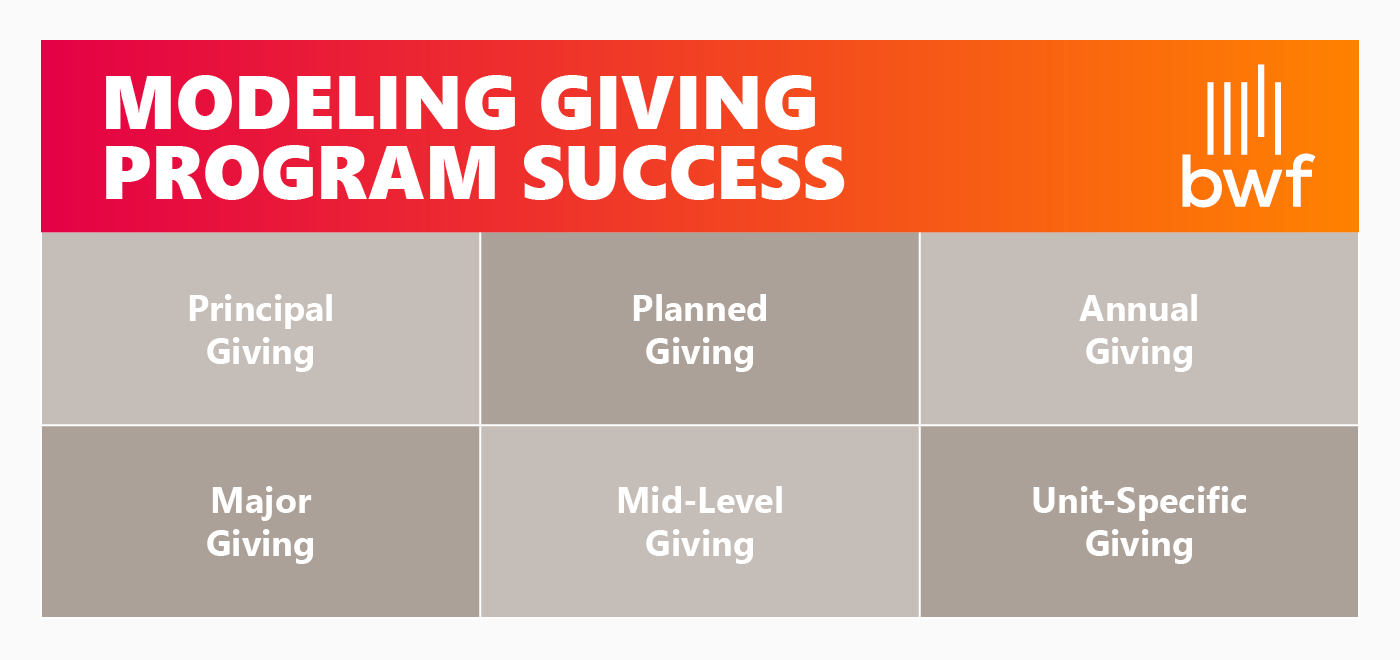
- Principal giving
- Planned giving
- Annual giving
- Major giving
- Mid-level giving
- Unit-specific giving
In the next section, we’re going to take a closer look at the most helpful use cases for predictive analytics.
10 ways to use predictive analytics to boost fundraising
Here are some of the ways nonprofit organizations can use predictive modeling to develop data-driven strategies and boost ROI:
- Develop audience personas. Run tests to determine the characteristics that your most engaged audience members share. Craft audience personas for important segments, such as major donors or legacy donors.
- Boost marketing. AI models can help determine the right messaging and marketing platforms to reach your unique audience. You can even use these tools to understand each donor’s or prospect’s preferred communication channels.
- Improve prospect research. Connect with potential new donors and develop your audience pipeline. You can improve your prospecting staff’s efficiency by using predictive models to determine which prospects deserve the most attention.
- Identify major and planned donors. Major and planned donors are likely among your nonprofit’s most important funders. Predictive modeling helps identify these top prospects and recommend the best messages and platforms to reach these individuals.
- Determine donation requests. Determine the right donation amount to request from each prospect or the right upgrade amount to ask for from existing donors.
- Reactivate donors. Use lapsed donor information to identify and reconnect with these donors to win back their support.
- Renew annual fund donors. Which of your previous annual donors will be willing to renew or increase their giving amount this year? Predictive models can help pinpoint your most likely recurring annual donors.
- Model campaign priorities. Predictive modeling can also be very effective in identifying the donors and prospects who are most likely to give to a comprehensive campaign or to particular campaign priorities. These models can help determine whether your organization is ready for a major campaign.
- Conduct grateful patient scoring. Use your data to improve your healthcare fundraising strategy by identifying key prospects, donors, volunteers, and patrons. Evaluate their unique characteristics, behaviors, and motivations to see what makes them stand out from other audience members. Create a custom score that you can use to evaluate everyone else in your database and see how they compare.
- Predict the impact of an economic downturn. AI and predictive modeling techniques can help you visualize the impact of an economic downturn and craft a response that keeps your fundraising efforts in a healthy spot.
Fundraising predictive analytics can take your strategies to the next level, giving you a fuller understanding of the giving potential within your donor base.
How to make the most of your fundraising predictive analytics
You’ll need to keep your data clean and organized to ensure that you can gather the most useful insights through predictive analytics. This is where data governance comes into play.
Data governance involves the policies and procedures your organization uses to keep your database clean and updated. These are the steps involved in proper data governance:
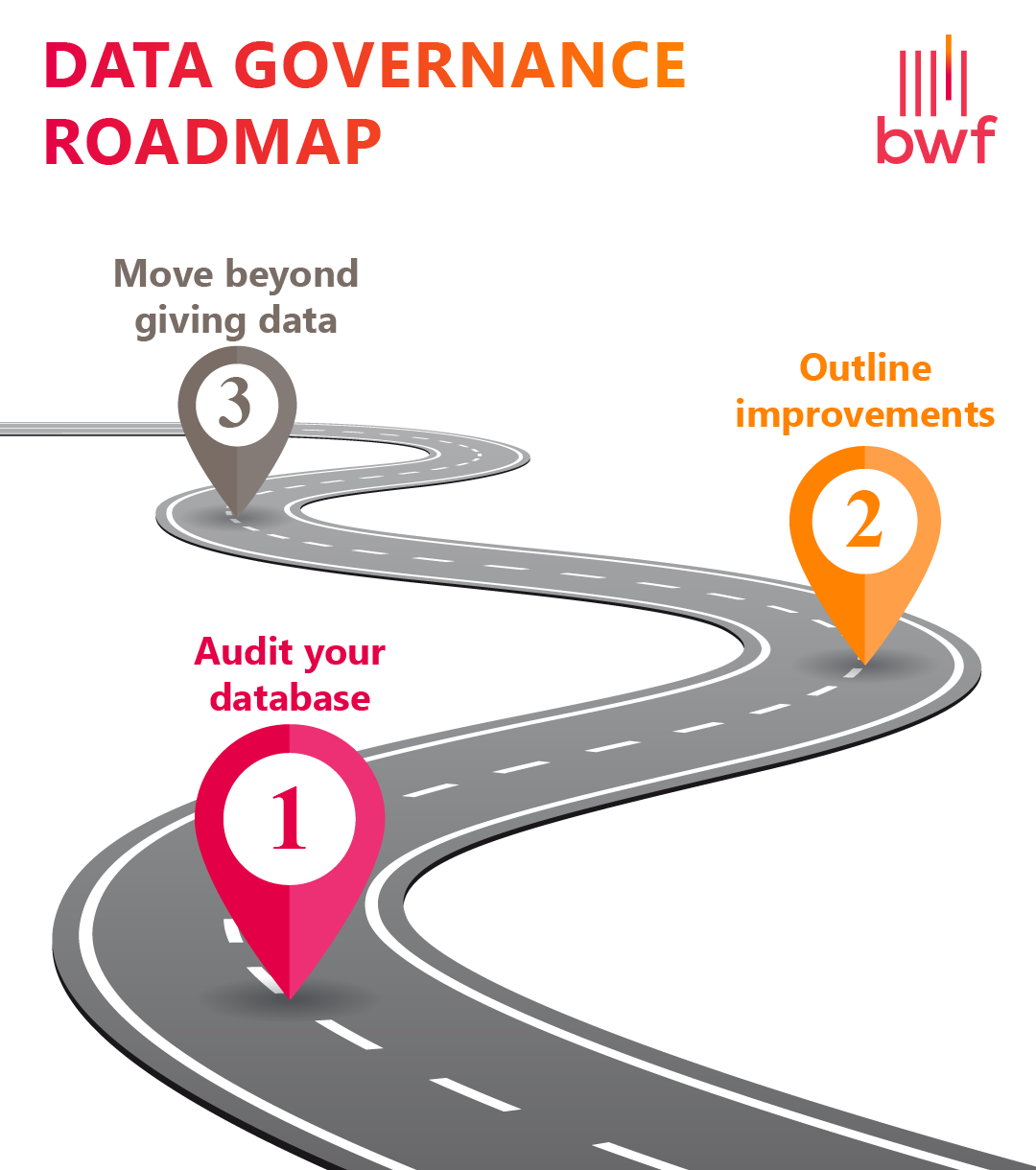
Audit your database
Regularly review your data collection and storage processes to make sure they’re as efficient as possible. Ask yourself these questions:
- What types of data are you gathering?
- Is it useful information?
- Is there additional data you should be collecting?
- How are you storing the data?
- How are you updating the data over time?
Make sure to also review who has access to your data and whether you need to limit that access to maintain strong data security. The more people who have full access to your data, the more opportunities there are for potential breaches.
Outline improvements
Set policies to ensure the ongoing collection and organization of useful information. Start with these steps:
- Eliminate unnecessary or inaccurate information identified during the audit process. This will help unclutter your dataset and improve its accuracy.
- Standardize the data input process. For example, set guidelines for inputting addresses or phone numbers. This helps eliminate duplicate or non-standard entries.
- Establish procedures for regularly refreshing data. Append your data as needed to fill gaps in your database and train team members on best practices for updating data when they receive new information.
Share these policies across your team so everyone is on the same page about what data to collect and how to upload that information.
Move beyond giving data
Donation data is important for conducting predictive analysis, but it’s not the only information that will help enhance your strategies.
In addition to giving data, consider collecting information such as geographic location, demographics, activities, interests, affiliations, behavioral patterns, prospect management details, and prospect screening data. The more data you can collect, the more accurate your internal datasets and modeling will be.
Above all, standardized implementation and adoption of models is key. It can be both overwhelming and exciting as you begin seeing modeling results and identifying new prospects. By incorporating modeling and data-driven strategies into your regular fundraising efforts, you can ensure that you don’t lose sight of the bigger picture of the story your data is telling.
How to get started with fundraising predictive analytics
You could perform data analysis in-house if you have a staff member who is trained in predictive modeling. However, many organizations don’t have this level of expertise, making it worthwhile to work with an external data analytics partner like BWF.
Our predictive analytics solution, called Donor AI, leverages IBM Watson to gather personalized insights from your nonprofit’s internal database.
Most providers offer static snapshots based on generic data appends. BWF uses all available sources of data, especially time-consuming internal transaction histories and behaviors, to provide truly one-of-a-kind models.
We’ve built standard major, planned, and annual gift models, as well as unique solutions such as capital campaign readiness, patient engagement, ambassador/class agent, disaster response, ticket conversion, sustainer giving, and so much more.
Because fundraising analytics can be overwhelming, we also provide strategic implementation counsel to ensure successful and sustainable growth. This time may be used for:
- Modeling results review
- Credential results with gift officers
- Integration of results into business processes
- Segmentation and prioritization of results
- Portfolio review and optimization
- Development of engagement strategy for greater giving
- Providing practical and actionable next steps with development officers and leadership to support the adoption of a data-supported fundraising team
These services offer the following benefits to nonprofits like yours:
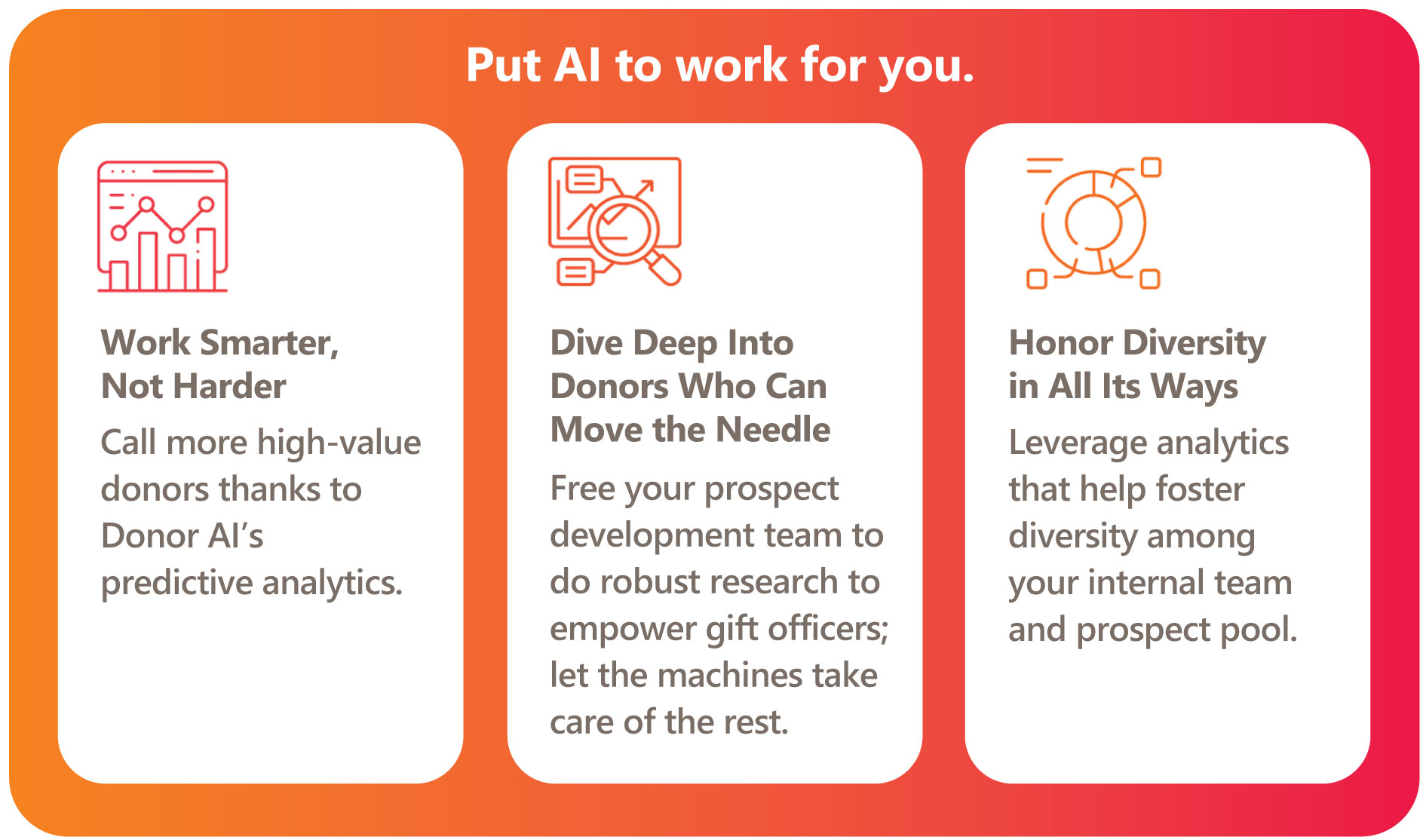
- Work smarter, not harder, by directly connecting with high-value donors.
- Free up your prospect development team’s time, allowing them to conduct more robust research and empower gift officers.
- Foster diversity among your internal team and prospect pool using AI solutions that actively combat bias.
BWF’s support can help your organization adopt the data-driven strategies it needs to be successful in today’s fundraising environment. Learn more about our services in this video:
Fundraising predictive analytics case study
Massachusetts General Hospital (Mass General) seeks to regularly update its data-first marketing approach. BWF has provided strategic counsel for Mass General since 2010.
Mass General leverages BWF’s managed services in data analytics to direct attention to critical projects as needed and maximize fundraising potential. Specifically, BWF has provided the following services to support Mass General’s fundraising efforts:
- Predictive modeling
- Insight analysis
- Performance and metrics review
- Grateful patient scoring
- Prospecting and portfolio management
- Benchmarking
- Lead source analysis
Because of the long-standing relationship between BWF and Mass General, the hospital has benefited from a consistent partnership that builds on past successes.
Tips for updating your predictive models
As you launch your predictive modeling strategy, remember that it should be an ongoing process, not a one-time project. Updating your predictive models over time ensures that they reflect the evolving nature of your constituency.
We recommend that you use these four criteria to determine the best time to refresh your predictive models:
- Increase in available data. Whenever you add a significant amount of new data to your records, it’s a good time to consider refreshing your models. An effective benchmark to consider a refresh is when the number of independent variables in your records increases by a minimum of 20%.
- Growth in your constituent base. Expanding your number of prospects or donors can warrant an update to your predictive modeling techniques. Consider how fast your constituency is growing; adding 2,000 new donors over a two-year period isn’t quite as impactful as adding 2,000 new donors in three months.
- A significant change in your target population. Broadening your organization’s reach by adding a large number of donors to specific campaigns, such as your annual campaign or direct mail list, is another threshold for updating your models.
- External influences. Major economic shifts, political changes, and other external factors can impact your donors’ ability to contribute to your organization. Take these opportunities to refresh your models to reflect current circumstances.
As you review your models and determine if they need to be refreshed, consider whether each model is still fulfilling a crucial need or if you can simply eliminate a certain model from your analysis. Continue only with the models that produce a high ROI for your organization.
Wrapping up
Optimizing your approach to predictive modeling now will set your organization up for success, since data-driven fundraising is becoming the norm. Review your models every three to six months to ensure that they’re still providing your organization with the insights you need to reach your constituents effectively.
For more information on modern fundraising best practices, check out these additional resources:
- AI Fundraising is the Future. Here’s What You Need to Know. AI fundraising tools make it simple to create and update predictive models. This complete guide has everything you need to know to get started.
- Digital Fundraising | 7 Powerful Campaign Ideas to Try. Connecting with supporters online is critical to raising more for your cause. Consider incorporating these campaign ideas into your strategy.
- University Fundraising: 9 Tips for Better Donor Engagement. Looking to connect with higher education donors on a deeper level? This guide offers tips for better donor engagement.
Let’s Talk
Find out how BWF can partner with you to launch your fundraising predictive analytics strategy.




